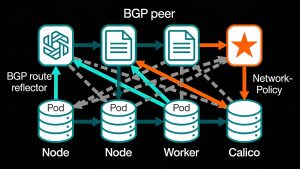In the rapidly evolving healthcare industry, digital innovation is essential for maintaining a competitive edge. One Fortune 500 healthcare enterprise recently redefined its approach to application development by embracing Hasura’s GraphQL technology. This strategic move resulted in remarkable gains in development speed, team efficiency, and business agility.
The Challenge: Modernizing Application Architecture
The company’s technology leadership, including the Principal Architect and Head of Engineering and Design, recognized the need for a more dynamic and scalable architecture to meet ambitious business objectives. Their primary goals included:
- Reducing the time required to move from concept to product delivery
- Enabling third-party developers to easily build on top of their platform
- Enhancing adaptability to market changes
Exploring GraphQL for Strategic Advantage
To address these priorities, the technology team evaluated several architectural solutions and identified GraphQL as the optimal choice. The decision was validated through two pilot projects: one for a new prototype and another for an existing product. These pilots demonstrated GraphQL’s potential to streamline development and support rapid iteration.
Assessing GraphQL Implementation Options
Initially, the team considered building custom GraphQL APIs in-house. However, a shortage of specialized developers and the availability of robust third-party tools led them to explore established solutions. After evaluating multiple platforms, Hasura emerged as the clear frontrunner due to its:
- Deep integration with PostgreSQL, leveraging existing database investments
- Seamless compatibility with on-premises databases, allowing for quick deployment with minimal setup
- High performance and minimal overhead
- Ability to eliminate the need for most backend code, reducing maintenance burdens
Implementation: Hasura in Action
The company began integrating Hasura across multiple products, with a strong emphasis on performance and simplicity. Previously, deploying enterprise solutions required significant capital expenditure approvals and posed barriers to client onboarding. Hasura’s lightweight, high-performance architecture enabled the company to offer streamlined, single-box solutions that accelerated customer adoption.
Addressing Security and Access Control
Security and access control were initial concerns for the healthcare provider. Through ongoing collaboration with the Hasura team and active participation in the Hasura Discord community, these challenges were addressed. The Hasura team worked closely with the company to introduce advanced, enterprise-grade security features tailored to their needs.
Results: Accelerated Development and Enhanced Productivity
The adoption of Hasura delivered transformative results:
- Dramatic Reduction in Development Time: Application delivery cycles shrank from months or years to just weeks.
- Smaller, More Agile Teams: Project team sizes dropped from 15 to 7–8 members, enabling leaner operations.
- Shift in Required Skill Sets: The need for backend and database specialists diminished. The company now primarily recruits full-stack developers with strong React experience.
- Simplified Middleware and API Management: Teams no longer need to manage complex middleware or frequent API changes, freeing them to focus on core functionality.
- Faster Sales Cycles: The ability to offer a performant, single-box solution has shortened sales cycles and is expected to positively impact revenue.
Future Roadmap
Looking ahead, the healthcare company plans to expand Hasura’s adoption across all business lines. By standardizing on this platform, they aim to further boost development velocity and team productivity, ensuring they remain at the forefront of healthcare technology innovation.
Conclusion
The journey of this Fortune 500 healthcare organization underscores the transformative impact of adopting Hasura’s GraphQL engine. By embracing modern development tools, the company has achieved faster time-to-market, streamlined operations, and greater flexibility—setting a new standard for digital innovation in healthcare.
Read more such articles from our Newsletter here.



